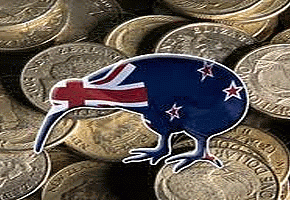
By Craig Simpson
With the end of the September quarter KiwiSaver results imminent, many of you will be eagerly anticipating your quarterly updates.
What should you 's be expecting to see return wise for the past three and twelve months for the period ending September 30 ?
If the monthly returns for June, July and August are anything to go by, I am expecting a mixed bag of returns with some funds recording negative returns in the short term (under 1 year).
Those in more aggressive (equity biased) KiwiSaver strategies should be posting double digit returns (12% to 20%) for the 12-months to September 30, while investors in more risk averse conservative strategies will have to temper their expectations and accept returns in the region of 5% to 6% as equities continue to outperform bonds.
The reversal of aggressive strategies outperforming conservative strategies has been a common occurrence over the past 12-18 months and illustrates how fickle markets can be.
Many conservative KiwiSaver strategies have been posting negative 3-month returns lately and this has been on the back of rising interest rates globally.
The current investment landscape has been dominated by two key themes for some time now 1) the state of the US economy and when will the US Federal Reserve (the Fed) taper back their massive US$85 bln per month bond buying program and 2) the perceived slow-down in the Chinese economy.
At the most recent meeting the Fed decided not to taper back their bond buying program despite market consensus saying this would occur. members want to see more economic improvement in the economy before they reduced their bond buying program.
The Fed also stated at the same meeting it would continue to keep overnight cash rates low as they made progress toward maximum employment and price stability. The Fed affirmed its view that a highly accommodative stance of monetary policy will remain appropriate for a considerable time after the asset purchase program ends and the economic recovery strengthens.
The Fed funds rate will remain a the 0 to ¼% target at least as long as the unemployment rate remains above 6½% and inflation between one and two years ahead is projected to be no more than a half percentage point above the Fed's 2% longer-run goal, and longer-term inflation expectations continue to be well anchored. Currently the US jobless rate sits at 7.3% and US inflation is at 1.5%, so there is quite a bit of work to be done before we see tighter monetary policies coming out of the US.
Data coming out of China is encouraging and it appears the fears of a economic slow down were unfounded. It would be unreasonable for anyone to expect any country, not just China, to sustain growth at such heady levels indefinitely.
For the past nine-months equity markets in developed countries have benefited substantially from the additional influx of capital and this has largely been at the expense of emerging markets and bonds which have taken a beating. US stock market indices for example are trading near all time highs.
Another factor which may impact some KiwiSaver investors will be movements in the NZ$ and the translation of offshore returns back into NZ$. Fund managers make an active choice to either remove currency fluctuation risk completely from their portfolios (fully hedge); fully or partially hedge certain portions of the portfolio; or remain completely unhedged.
These decisions impact the returns on a portfolio to varying degrees and need to be taken into account when deconstructing the returns to see exactly where the returns are coming from.
Investors should be looking forward to the new reporting regime which took effect from July 1, where KiwiSaver managers must begin providing greater disclosure and transparency on their various schemes.
I support greater disclosure and transparency across KiwiSaver and this should allow investors to better understand their own schemes and make informed choices as to whether their scheme is right for them. To learn more about the new requirements read our previous story here.
More details on the reporting being provided by KiwiSaver managers can be found on the FMA website here
(updated with reference to FMA website and more information)
1 Comments
Olly is going to have to lift his game to get the comments he does now.
Kiwisaver: This is the one to watch over the next few years. Funds starting to be noticeable, with significant steady inflow that will only continue, and of a size now to have good returns adding to that inflow. It's going to be big.
Maybe in ten years time interest.co common taters will be paying the same obsessive attention to Kiwisaver fund performance, as they now do to property. It's going to be important.
We welcome your comments below. If you are not already registered, please register to comment.
Remember we welcome robust, respectful and insightful debate. We don't welcome abusive or defamatory comments and will de-register those repeatedly making such comments. Our current comment policy is here.